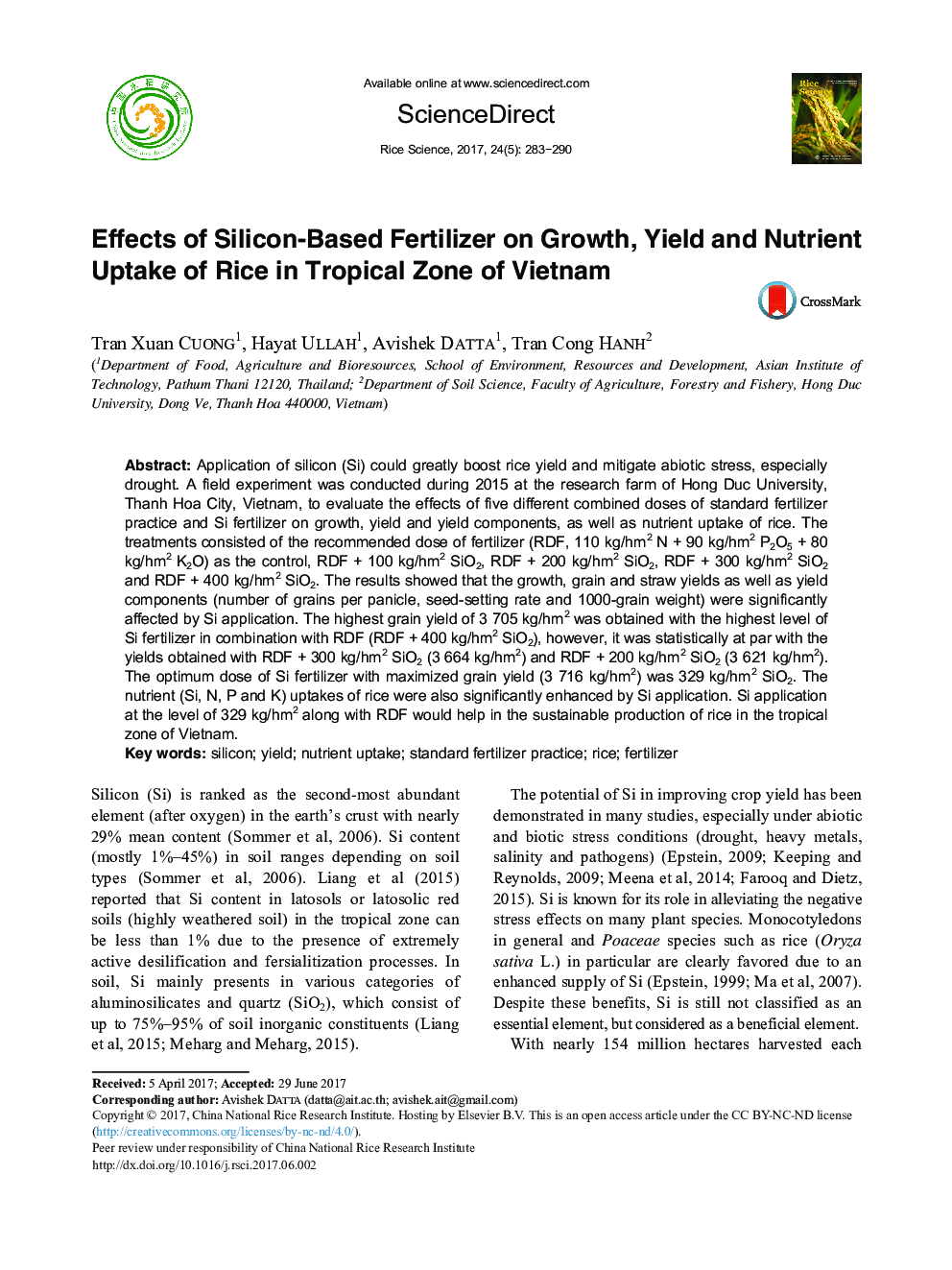| Article ID | Journal | Published Year | Pages | File Type |
|---|---|---|---|---|
| 8877349 | Rice Science | 2017 | 8 Pages |
Abstract
Application of silicon (Si) could greatly boost rice yield and mitigate abiotic stress, especially drought. A field experiment was conducted during 2015 at the research farm of Hong Duc University, Thanh Hoa City, Vietnam, to evaluate the effects of five different combined doses of standard fertilizer practice and Si fertilizer on growth, yield and yield components, as well as nutrient uptake of rice. The treatments consisted of the recommended dose of fertilizer (RDF, 110Â kg/hm2 N + 90Â kg/hm2 P2O5 + 80Â kg/hm2 K2O) as the control, RDF + 100Â kg/hm2 SiO2, RDF + 200Â kg/hm2 SiO2, RDF + 300Â kg/hm2 SiO2 and RDF + 400Â kg/hm2 SiO2. The results showed that the growth, grain and straw yields as well as yield components (number of grains per panicle, seed-setting rate and 1000-grain weight) were significantly affected by Si application. The highest grain yield of 3 705Â kg/hm2 was obtained with the highest level of Si fertilizer in combination with RDF (RDF + 400Â kg/hm2 SiO2), however, it was statistically at par with the yields obtained with RDF + 300Â kg/hm2 SiO2 (3 664Â kg/hm2) and RDF + 200Â kg/hm2 SiO2 (3 621Â kg/hm2). The optimum dose of Si fertilizer with maximized grain yield (3 716Â kg/hm2) was 329Â kg/hm2 SiO2. The nutrient (Si, N, P and K) uptakes of rice were also significantly enhanced by Si application. Si application at the level of 329Â kg/hm2 along with RDF would help in the sustainable production of rice in the tropical zone of Vietnam.
Related Topics
Life Sciences
Agricultural and Biological Sciences
Agricultural and Biological Sciences (General)
Authors
Tran Xuan Cuong, Hayat Ullah, Avishek Datta, Tran Cong Hanh,
